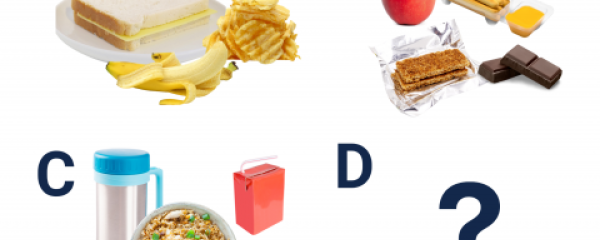What is it all about?
Students examine menus that are targeted at young children, in order to understand how advertisements and food marketing techniques impact their perceptions about food and influence their food choices. Students express their thoughts and feelings about food advertising on menus, and apply their understanding to make healthy food decisions in a variety of settings, considering the factors they can and cannot control.
Curriculum Connections
Grade 1
Health & Physical Education: A1.1, A1.3, A1.5, A1.6, D1.1
Language - Media Literacy: 1.1, 1.2, 1.3, 1.4, 1.6, 2.1, 2.2, 3.2, 3.3, 3.4
Grade 2
Health & Physical Education: A1.1, A1.3, A1.5, A1.6, D2.2
Language - Media Literacy: 1.1, 1.2, 1.3, 1.4, 1.6, 2.1, 2.2, 3.2, 3.3, 3.4
Grade 3
Health & Physical Education: A1.1, A1.3, A1.5, A1.6, D1.1, D2.1
Language - Media Literacy: 1.1, 1.2, 1.3, 1.4, 1.6, 2.1, 2.2, 3.2, 3.3, 3.4
What is needed?
- Sample restaurant menus that are produced for children
- Pictures and/or images of food menu boards at counters or drive-through take-out
How is it done?
- Facilitate a large-group discussion to explore student perceptions about the idea of “kid” food versus adult food. Use discussion prompts such as:
- “What do you think of when people talk about ‘kid’ food?”
- “If someone talks about food ‘for grown-ups,’ what do you think of?”
- “How might food made for children be similar to or different from food made for adults?”
- “Where have you heard the term ‘kids’ food’ or ‘kids menu’?”
- “When you think of ‘kids food’ or ‘kids menus’ what kind of food do you think of? Why? Where do you think you get that idea?”
- “Why do restaurants offer a special menu for young people?”
- Find and show students sample children’s menus from a variety of restaurants, food courts, and drive-thru menu boards.
- Ask students to identify features of the menu that appeal to them. Guide them to build their awareness of how food marketing techniques influence their food perceptions and decisions. Use discussion prompts such as:
- “What do you notice about the colours, images, words, and letters used in the menus?
- “Which menu appeals to you most? Why?”
- “How do the colours, shapes, images and words make you feel? (e.g., happy, hungry, thirsty, excited to try)
- “What do the menus make you think about the food?” (e.g., It is a healthier menu choice. It will make me strong. It will help my bones grow.)
- “Think about how the food is shown on the menu. Does one food look like a healthier menu choice than another? Why?”
- “What else is on the menu that might convince you to select that food? (e.g., It comes with a toy. It comes with a free drink. It comes with a dessert.)
- Have students identify what they think about when they want to make healthier food choices at restaurants. Provide students with tips for choosing healthier options from Canada’s Food Guide to help guide their thinking.
- Have students work in small groups to identify the healthier menu options from the different menus. Ask them to consider foods they would choose most often, sometimes, or as a treat. Make sure students understand that not every choice always has to be the healthier option and that it is about managing their food choices as part of a healthy eating pattern. Have small groups share and explain their choices with the whole class.
- Consolidate the discussion by telling students they don't have to order from a “kids” menu. If they have the option, they can choose foods from different sections of the menu. They can also ask the server if there are other alternatives to the selections on the “kids” menu.
- Have students use a Think, Pair, Share strategy and discuss the different restaurant options available to them. Have students decide where they can choose to go more often when they want the healthier food options.
- Have pairs use what they learned about food marketing techniques to create a menu for their chosen restaurant. The menu should look appealing to people their age and have a variety of healthy food options that they also find appealing.
Opportunities for Assessment
- Use student responses from the large-group discussion to assess students’ understanding of food marketing techniques companies use to influence their food choices.
- Use the small-group work to assess students' understanding of how to make healthier food choices from foods that are available to them when eating out.
- Use the student-generated children’s menus to assess students’ understanding and application of media conventions and techniques.
Ideas for Extension
- Have students identify other food products that they see or consume often and decide whether the packaging uses the same techniques that they see on “kids” menus. Then have students create a question they might ask about that food. Sample questions might include:
- “What do I want to know about this food?”
- “Is it the healthier menu choice for me?”
- “Is it a meal food or snack food?”
- “Is it a food I would choose often, sometimes, or as a treat?”
- Have students write a letter to a local restaurant asking them to provide a balance of healthier food options for people their age or to offer incentives for selecting healthier choices that would appeal to youth.
Educator Notes
- Students bring their learning home to their families, and they have variable amounts of control over the food they eat at home and the food they bring to school. Consult Creating a Safe and Inclusive Learning Environment for tips on talking about healthy food choices.
- Consult Additional Resources for more information about marketing techniques and their influences on food choices.
- Consult Canada’s Food Guide for more information about marketing influences on food choices and tips for making healthier food choices in a variety of settings.



